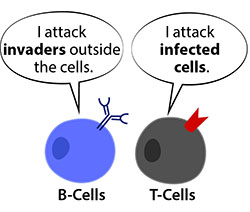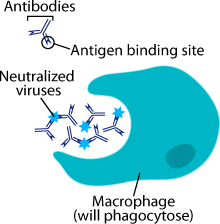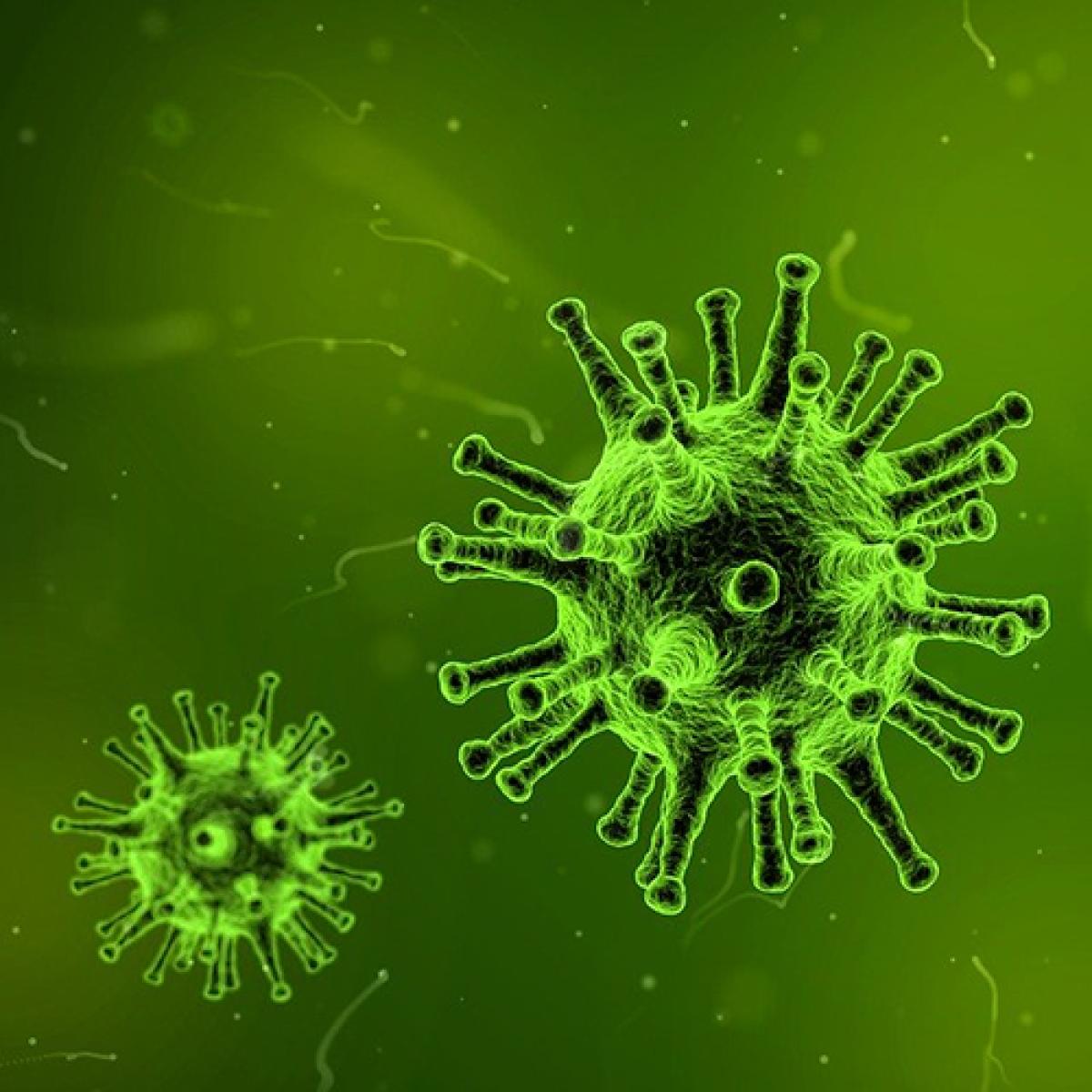
B-Cell
You might think B-cells got their name because they are made inside your bones. It is true that most blood cells are made inside the bone marrow, but that is not where the “B” in B-cells came from. Their name comes from the name of the place they were discovered, the Bursa of Fabricius. The Bursa is an organ only found in birds.

Unlike T-cells and macrophages, B-cells don’t kill viruses themselves. In the Viral Attack story, the B-cell sweeps up the leftover viruses after the T-cell attack. Actually, B-cells are as important as T-cells and are much more than just a final clean-up crew. They make important molecules called antibodies. These molecules trap specific invading viruses and bacteria. Without this line of defense, your body would not be able to finish fighting most infections.
B-cell, T-cell, what’s the difference?
Just like T-cells, each B-cell has a receptor that will connect to only one antigen shape. And, like T-cells, B-cells that recognize self-antigens are destroyed, so they don’t harm your body’s healthy cells.

An important difference between T-cells and B-cells is that B-cells can connect to antigens right on the surface of the invading virus or bacteria. This is different from T-cells, which can only connect to virus antigens on the outside of infected cells.
Your body has up to 10 billion different B-cells. They’re too small to see with your eyes, but if you lined them all up, they’d be longer than 100 soccer fields. With so many different B-cells patrolling your body, you are ready to fight almost any invader.
B-cells become plasma cells
When a B-cell receptor connects to its specific antigen, a Helper T-cell releases chemicals that tell that B-cell to divide many times. This makes an army of B-cells with the perfectly shaped B-cell receptor to connect to the invader in your body.
Many of these B-cells quickly turn into plasma cells. Plasma cells make and release antibodies that connect to the same antigen as the original B-cell receptor. Plasma cells make thousands of antibodies per second, which spread throughout your body, trapping any viruses they see along the way.

What do antibodies do?

Antibodies trap invading viruses or bacteria in large clumps. This makes it easy for macrophages to eat them. Antibody-coated viruses are called “neutralized” because they can’t infect your cells.
Even after you have fought off your infection, some antibodies stay in your blood. If that virus tries to infect you again, your immune system has a head start trapping it.
Bibliographic details:
- Article: B-cells
- Author(s): Dr. Biology
- Publisher: Arizona State University School of Life Sciences Ask A Biologist
- Site name: ASU - Ask A Biologist
- Date published: 16 Feb, 2011
- Date accessed:
- Link: https://askabiologist.asu.edu/b-cell
APA Style
Dr. Biology. (Wed, 02/16/2011 - 11:25). B-cells. ASU - Ask A Biologist. Retrieved from https://askabiologist.asu.edu/b-cell
Chicago Manual of Style
Dr. Biology. "B-cells". ASU - Ask A Biologist. 16 Feb 2011. https://askabiologist.asu.edu/b-cell
Dr. Biology. "B-cells". ASU - Ask A Biologist. 16 Feb 2011. ASU - Ask A Biologist, Web. https://askabiologist.asu.edu/b-cell
MLA 2017 Style
Be Part of
Ask A Biologist
By volunteering, or simply sending us feedback on the site. Scientists, teachers, writers, illustrators, and translators are all important to the program. If you are interested in helping with the website we have a Volunteers page to get the process started.


